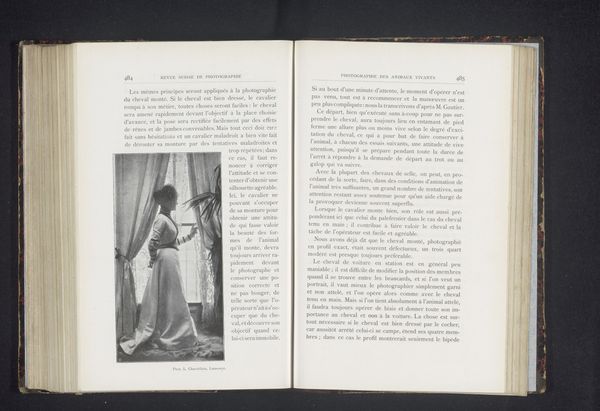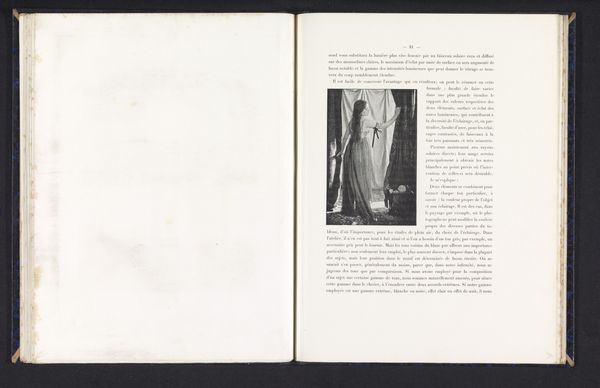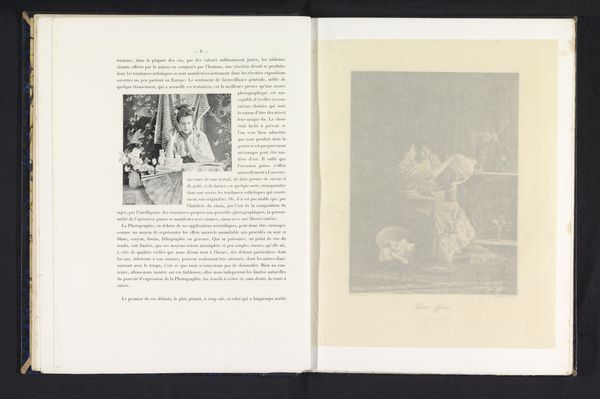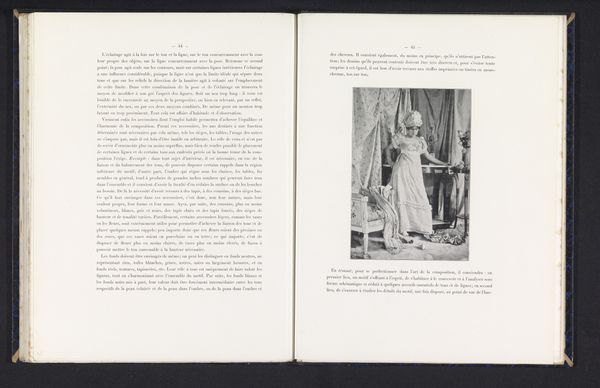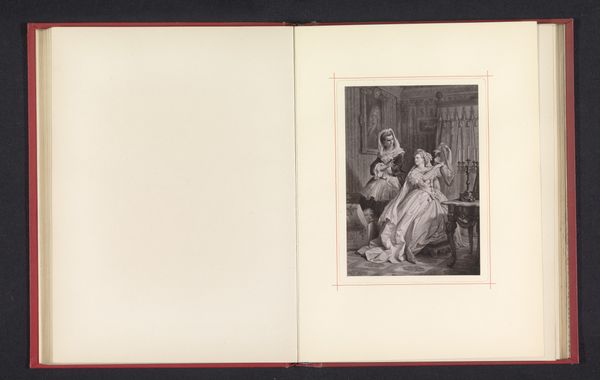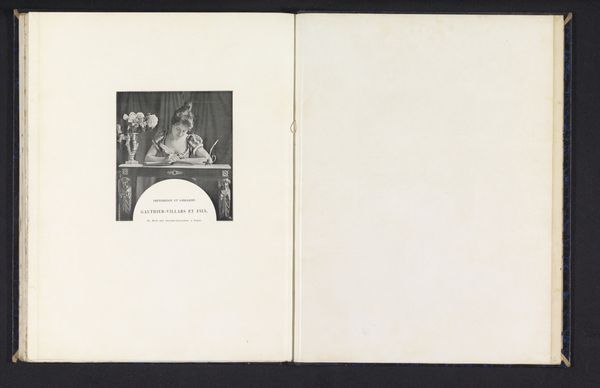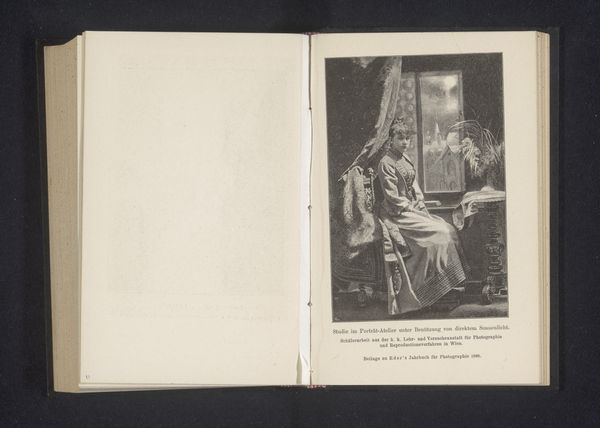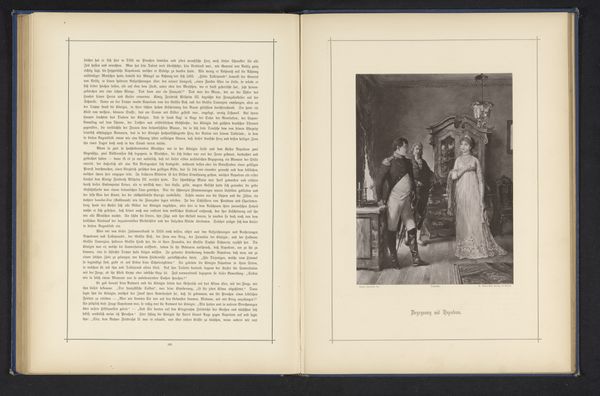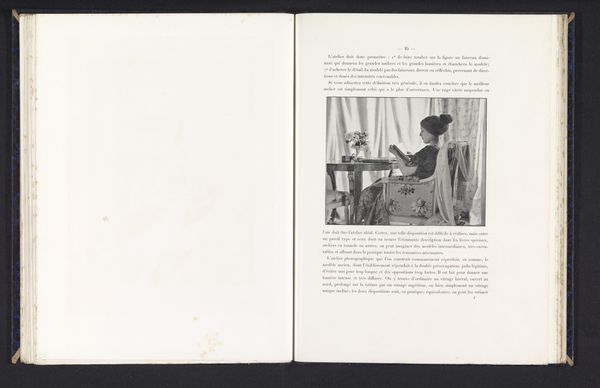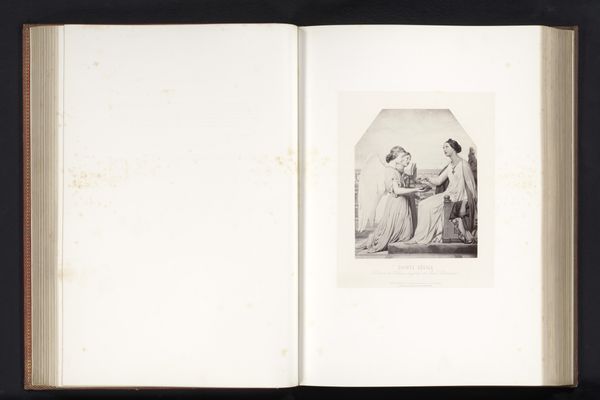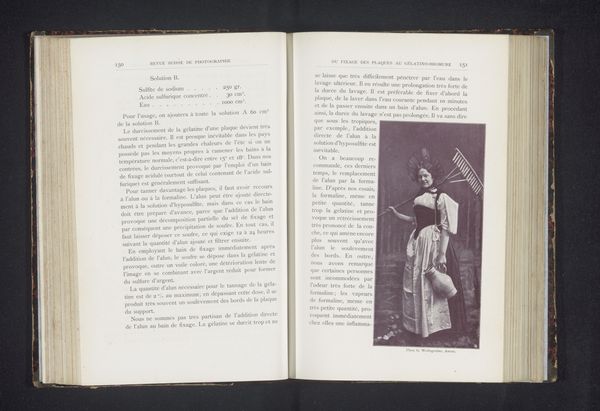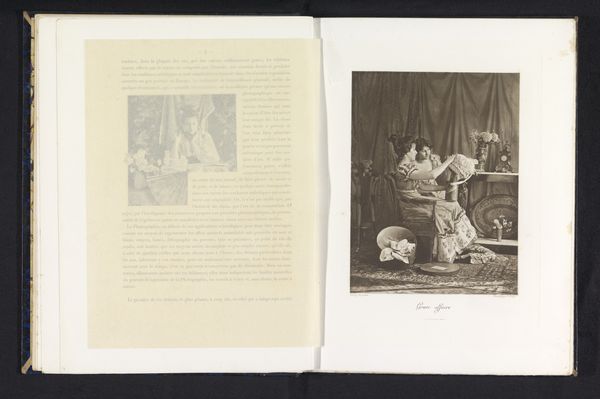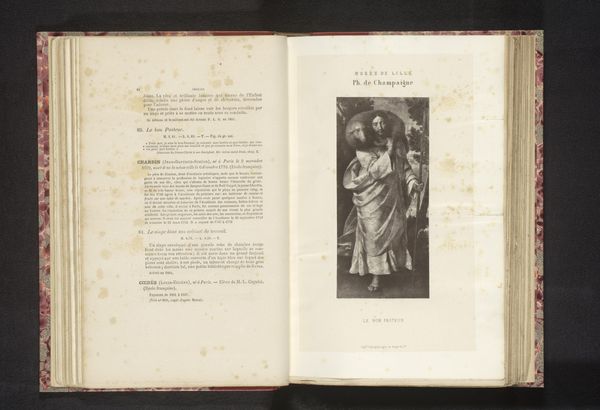
print, photography
#
portrait
#
pictorialism
# print
#
photography
#
symbolism
#
genre-painting
Dimensions: height 148 mm, width 110 mm
Copyright: Rijks Museum: Open Domain
Editor: Here we have Constant Puyo's photograph "Kneeling Woman Adjusting a Dress", made before 1896. It has an intimate and almost staged feeling. What do you make of it? Curator: I’m drawn to how Puyo's "Kneeling Woman Adjusting a Dress" engages with the very act of photographic production. Pictorialism often attempted to elevate photography to the level of "high art" by mimicking painting's aesthetic and subject matter, but let's consider the labour embedded within the photographic process itself. What kind of social hierarchies are revealed through this staged genre scene and what kind of consumer habits does the scene suggest? Editor: That's interesting! So you're saying that rather than focusing on the artistic merit, we should think about how it reflects the material realities of its time? Curator: Precisely. The act of dressmaking itself involves labor, often feminized labor, which may not always be visible in the final, consumed product. By showcasing this mundane act, Puyo provides insight into class structures and gendered divisions of labour. How do the subject’s clothing and pose fit within the wider pictorialist aesthetic that embraced classical themes while also showing a growing, commercialised, middle class? Editor: I hadn’t considered the performative aspect of that labor and how Puyo may be inviting a critique. Now I’m noticing more how constructed it feels and all that might imply. Curator: And perhaps the act of photography itself. Puyo may subtly question the idea of the ‘natural’ or ‘real’ image, instead pointing towards the crafted, deliberate construction inherent in all visual representations. Editor: That makes me rethink my initial reaction! It shows how something can appear sentimental but reveal more about the economic relationships behind the image. Curator: It makes me consider the power of images to reveal both beauty and deeper historical realities when we analyze the whole production.
Comments
No comments
Be the first to comment and join the conversation on the ultimate creative platform.
